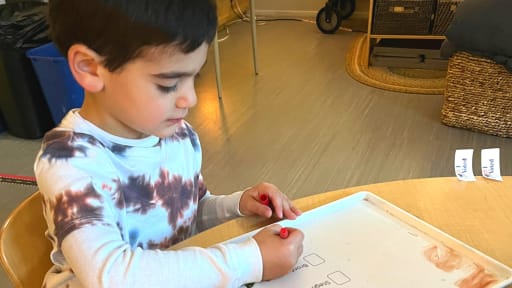Encouraging independent play in children is not only possible but can also offer you some much-needed downtime. This guide will show you how to make it happen.
Every parent needs a break, and teaching children to play on their own is a win-win. Independent play helps kids develop creativity and problem-solving skills. It also gives parents a chance to relax or focus on other tasks. But how do you get your child to play alone?
It might seem challenging at first, but with a few strategies and some patience, your child can learn to enjoy independent play. This blog post will explore practical tips to help you encourage this valuable skill in your child. Get ready to reclaim some of your time!

Credit: www.appleslicesllc.com
Benefits Of Independent Play
Encouraging independent play is crucial for a child’s development. It offers numerous benefits that help children grow into confident and capable individuals. Independent play allows children to explore their creativity, solve problems, and develop self-confidence. These skills are essential for their future success and happiness.
Fostering Creativity
Independent play lets children use their imagination. They create their own worlds, characters, and stories. This creative freedom helps them think outside the box. Children learn to express themselves in unique ways. Creativity developed during play can be seen in their art, writing, and problem-solving skills.
Building Problem-solving Skills
During independent play, children encounter challenges. They figure out solutions on their own. This process builds their problem-solving skills. They learn to think critically and make decisions. These skills are valuable in everyday life. Children become more resourceful and confident in their abilities.
Creating The Right Environment
Encouraging independent play can give parents a much-needed break. The right environment can make all the difference. A safe, engaging space helps children explore and play on their own. This section will guide you in creating that perfect setting.
Safe Play Area
A safe play area is crucial for independent play. Ensure the space is free from hazards. Remove sharp objects and cover electric outlets. Use baby gates to keep the area secure. A soft rug or foam mats can cushion falls and prevent injuries. This will give you peace of mind while your child plays.
Good lighting is also important. It helps children see their toys and avoid accidents. Make sure the play area is well-lit. Natural light can be very beneficial too.
Age-appropriate Toys
Toys should match your child’s age and skills. They should be easy to handle and safe to use. Avoid toys with small parts for younger children. These can be choking hazards. Choose toys that encourage creativity and problem-solving. Blocks, puzzles, and art supplies are great options.
Rotate toys to keep the play area interesting. This keeps children engaged and curious. You don’t need to buy new toys often. Simply switching out old ones can make a big difference.
Encouraging Self-directed Activities
Encouraging self-directed activities in children helps them grow more independent. They learn to entertain themselves and develop problem-solving skills. It also gives parents a much-needed break. Here are some tips to help you encourage independent play.
Setting Playtime Routines
Establishing a routine helps children know what to expect. Set a specific time each day for independent play. This consistency provides a sense of security. Start with short periods and gradually increase the time as your child becomes more comfortable.
Make sure the play area is safe and has a variety of toys. Rotate toys to keep things fresh and interesting. Offer a mix of educational and fun items. This variety keeps your child engaged and reduces boredom.
Offering Positive Reinforcement
Praise your child when they play independently. Simple phrases like “Great job playing on your own!” can boost their confidence. Positive reinforcement encourages them to repeat the behavior.
Celebrate small milestones. If your child plays alone for 10 minutes, acknowledge it. Reward them with a favorite activity or a special treat. This recognition makes them feel proud and motivated to continue.

Credit: www.facebook.com

Credit: www.bernardzell.org
Frequently Asked Questions
How Do You Encourage Independent Play?
Create a safe play area with diverse toys. Set a routine for playtime. Encourage creativity and praise efforts. Rotate toys to maintain interest. Allow children to explore and solve problems independently.
How Do You Encourage Free Play?
Provide a variety of toys and materials. Create a safe, open space. Allow children to explore and imagine freely. Encourage creativity by joining in occasionally. Limit screen time to promote physical activity.
How To Encourage Children’s Independence?
Encourage children’s independence by offering choices, allowing them to solve problems, praising efforts, setting achievable goals, and teaching self-care skills.
How Do You Encourage Children To Initiate Play?
Create a playful environment with diverse toys and games. Join their play to model interaction. Offer praise and encouragement.
Conclusion
Encouraging independent play benefits both you and your child. It fosters creativity and self-reliance. You get some much-needed rest. Start with simple toys and clear boundaries. Be patient and consistent. Celebrate small successes. Over time, your child will play independently longer.
Both of you will enjoy the balance. Independent play is a win-win. Try these tips and see the difference. Your child’s growth and your peace of mind are worth it. Happy playing!
Read More:
